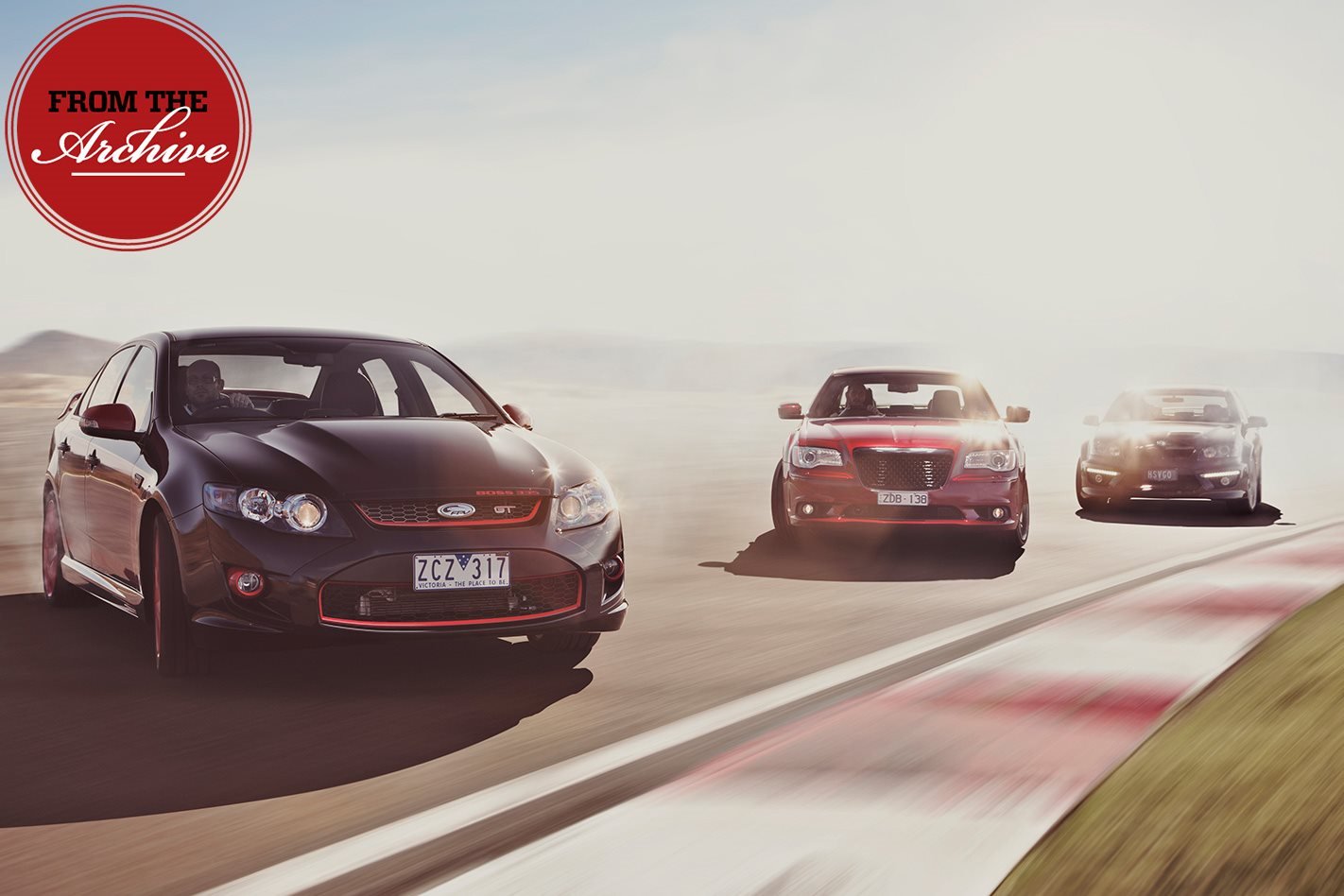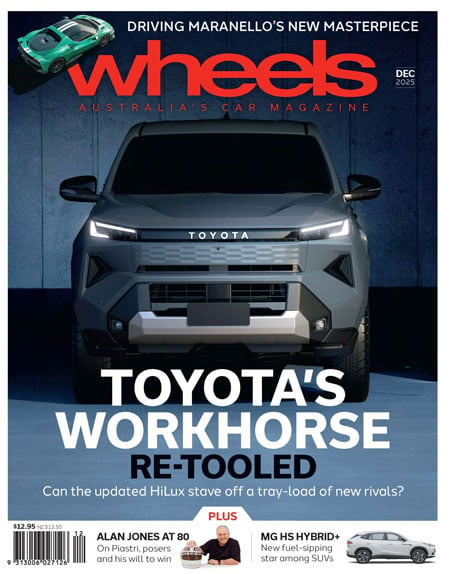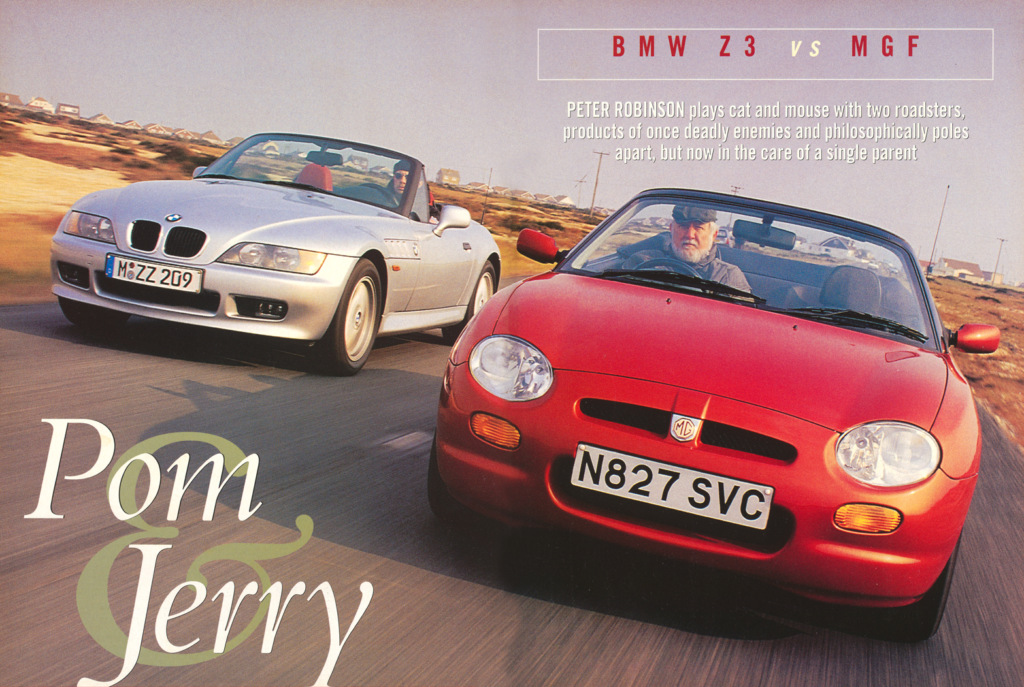First published in the October 2012 issue of Wheels magazine, Australia’s best car mag since 1953.
They each pack enough firepower to shred the treads, but only one can truly lay claim to being Australia’s fastest car.
FOUR POINT something. That’s all I want the Vbox display to spit out after numerous, often-frustrating runs at Eastern Creek’s sticky dragway in the new, hard-core FPV GT R-Spec.
Only once have I managed to muscle an Aussie-built car under the five-second bracket – a 4.99 fluke in an HSV GTO Coupe about six years ago. The best I’ve managed from an FPV was a 5.00 in a 310kW F6 auto. As for best-ever Aussie car acceleration data, Wheels’ Jonathan Hawley once ripped a 4.7sec 0-100km/h out of a 7.0-litre, 375kW HSV W427 on his way to a 12.8sec 0-400 metre pass. That was in August 2008, and nothing, especially not FPV’s supercharged but traction-limited GT, has since come close.
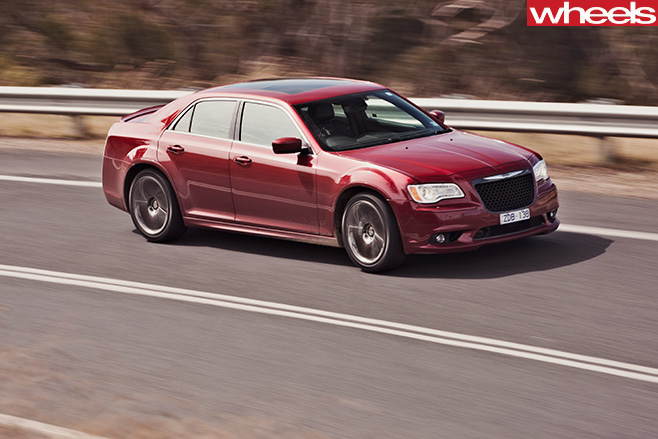
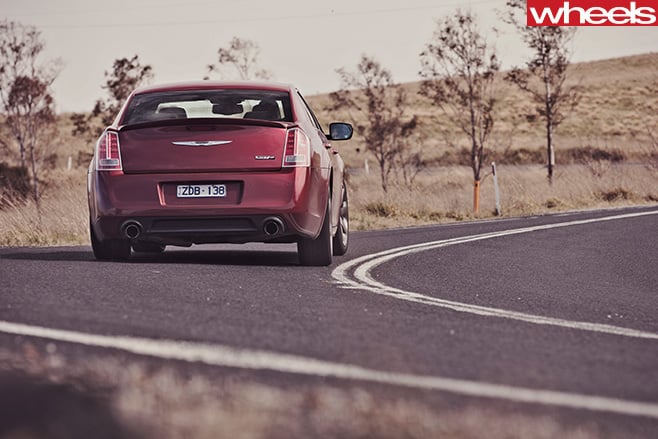
Prior to testing the FPV, either as a way to build tension or to prolong the disappointment if the R-Spec couldn’t do the number, I first run the Chrysler 300 SRT8 (they’ve dropped the C) and HSV’s Clubsport R8.
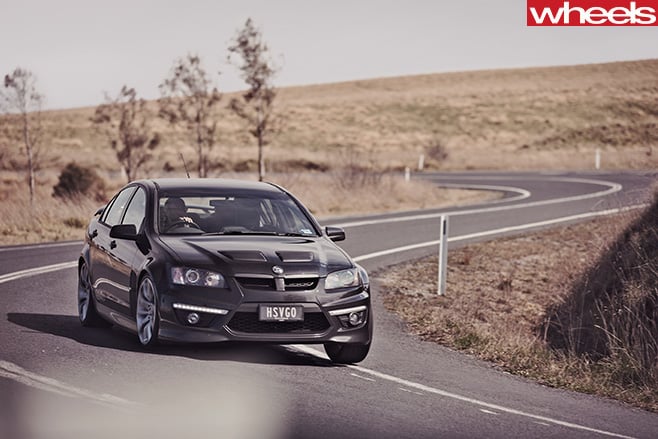
The six-speed manual Clubsport R8, which in HSV 25th Anniversary guise now gets the 325kW V8 once reserved for the GTS, takes a great deal more finesse to launch, either using the Competition Mode launch control or when flying solo. Curiously, the launch control function doesn’t deliver either consistency or fast times so our quickest runs are with everything switched off. Despite all that power, torque and capacity, you ride a knife’s edge of revs to avoid bogging the engine down, or overwhelming the rear tyres. A dozen frustrating runs, split between both myself and fellow tester Dan DeGasperi, leaves the Clubsport’s best on the day at 5.3sec to 100km/h and 13.4sec 0-400m.
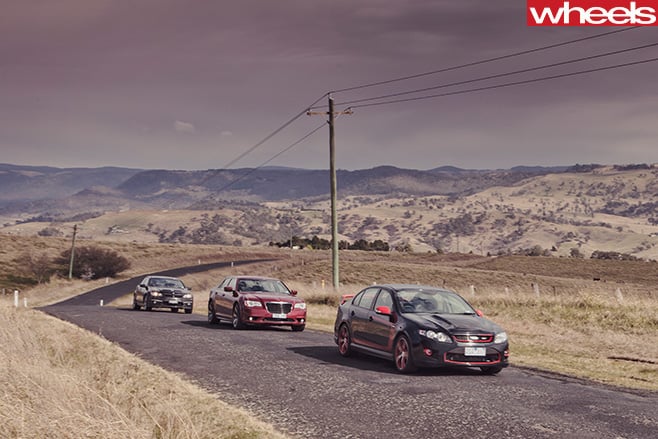
The R-Spec’s launch control engages only when stability and launch control is on, though the car does launch hard with ESC switched off. Depress the clutch, engage first gear and apply wide-open throttle. The whine of the supercharger is barely audible as the V8 booms and stutters with the revs settling to around 3200rpm. Drop the clutch, and the ECU massages torque but there’s still some wheelspin, though the extra bite from the wider tyres is immediately noticeable as first is swallowed in a blur of serious thrust. Second needs to be muscled home and, despite ESC being active, there’s a burst of wheelspin as the supercharger applies its blowtorch again. The crossgate shift to third is hit and miss (I miss three times in eight runs) but get it right and there’s another staccato chirp from the rear Dunlops. There’s a final protest from the tyres as fourth is needed just before the 400-metre timing marker.
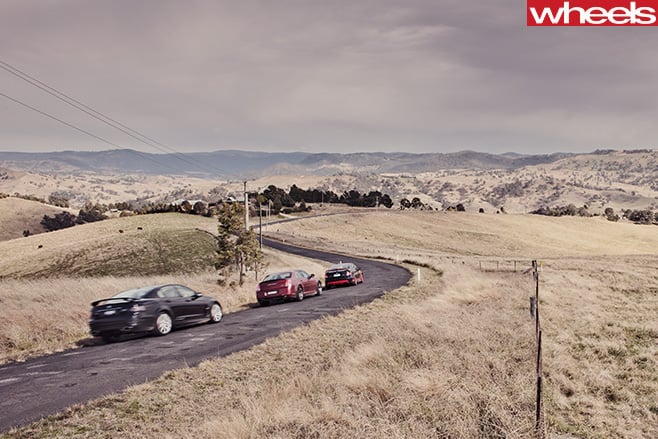
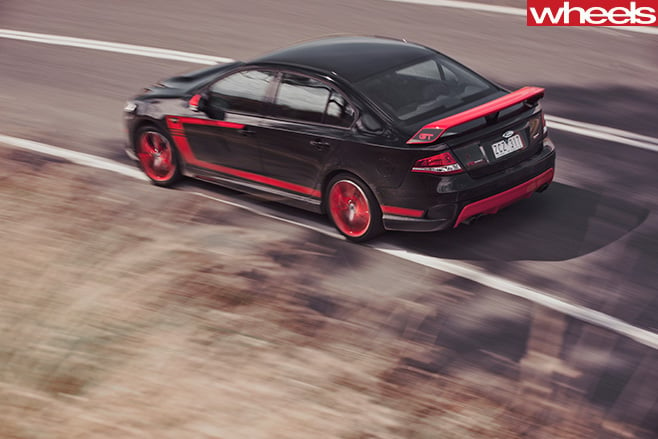
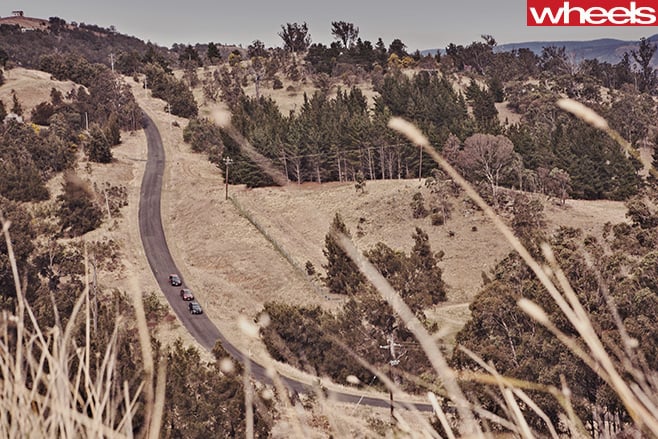
Not only are these changes designed to deliver faster times at the strip, but they are about making the R-Spec a pointier, better-controlled muscle car on backroads and racetrack. FPV says the changes and associated R&D work cost $4 million. Though there’s no official word yet, the company will obviously look to amortise that cost over more than the 350 R-Specs it plans to build (most of which will be sold by the time you read this).
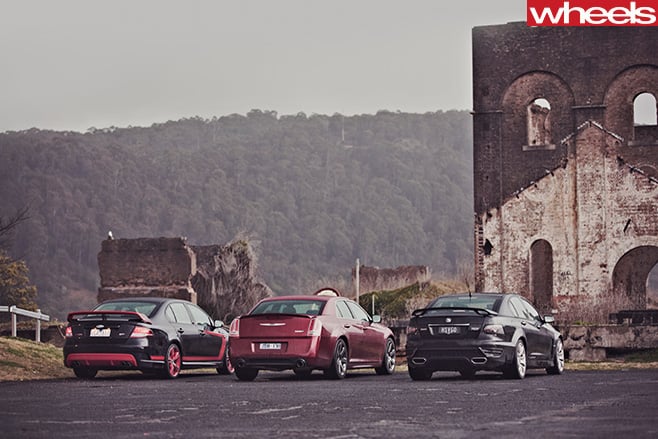
Some may question why FPV’s biggest gun is being matched against the $71,500 Clubsport R8 but there’s a simple, non-conspiracy-theorist explanation. Until HSV announces its plans for a 25th-anniversary GTS model (expected mid-October), the now-325kW Clubsport R8 is the brand’s biggest hitter. Fitted with 20-inch wheels, bi-modal exhaust and HSV’s Enhanced Driver Interface (EDI) system, the R8 lacks only the GTS’s superb Magnetic Ride Control suspension, relying instead on good old-fashioned steel springs and hydraulic dampers.
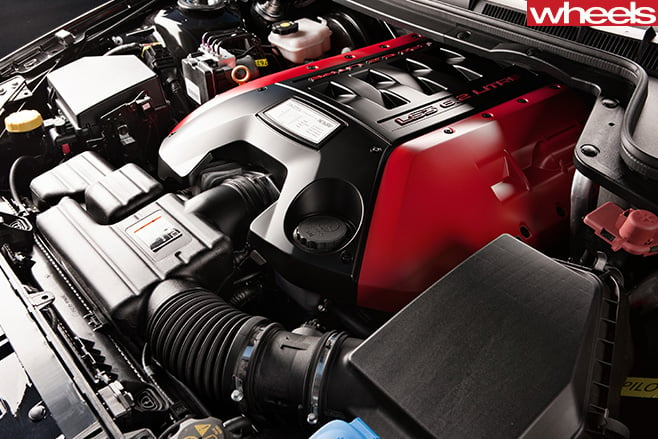
The previous-generation SRT8 was an aloof handler with a brittle ride and while the new car is hardly the last word on involvement, it rides with real aplomb. And it exudes a level of refinement that frankly embarrasses the two locals. When cruising, and regardless of road surface, there’s minimal engine or road noise, which tricks you into thinking you’re not going quick – you are. The steering is still numb and the wheel on our test example moaned softly as you turned hard to the right. With 245/45 ZR20 Goodyear Eagle F1 Supercar tyres at both ends, the SRT8 actually has the narrowest rear tyres on test. The Chrysler’s refinement and lack of feedback hinders your ability to detect the onset of under- or oversteer. Really push and there’s some rack rattle over mid-corner bumps.
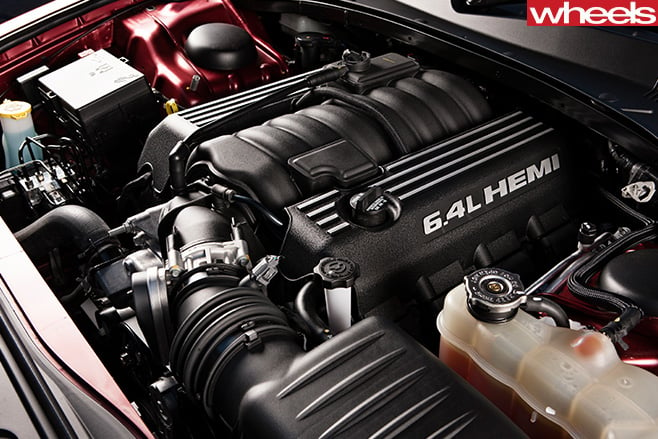
Get deep into the rev range and the once-mute Hemi finds its voice. Disappointingly, though, the big V8 lacks the throttle response of the Aussie pair but the five-speed auto isn’t the handicap you might expect. Actually, it suits the cruisey, bruisey nature of the Chrysler. The new eight-speed auto will address the slow shifts (both up and down), and a wider spread of ratios will allow the engine to make better use of its torque.
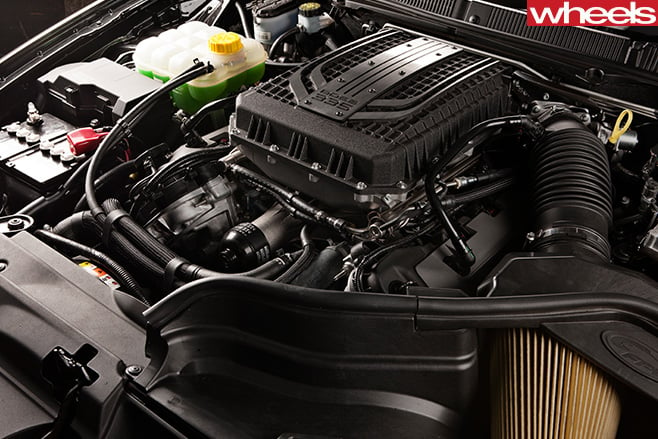
Thankfully, that monster supercharged V8 can cover the many deficiencies of the gearbox and the three-four plane is all you need on anything but the tightest roads. The supercharger whine comes on strong from 2500rpm with maximum torque (nominally 575Nm) available across a plateau from 2200-5500rpm. FPV admits that the blower will overboost and the true torque figure is in the 600s. And the autokW at 5750rpm also feels a bit modest.
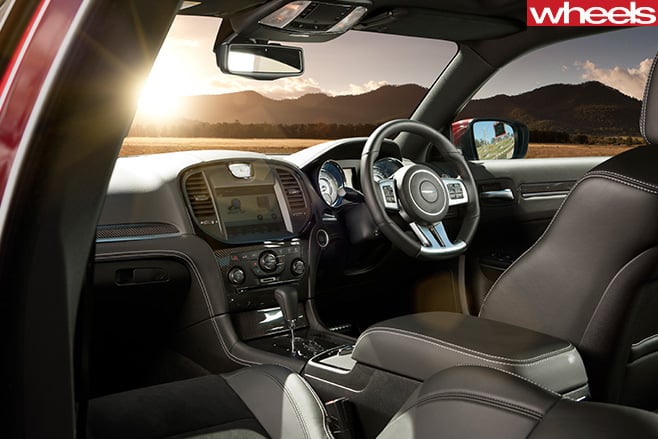
The firmness of the rear needs to be recognised and treated with caution when cornering on anything but smooth tarmac. Striking a mid-corner bump with either the loaded outside, or unladen rear tyre has the big Falcon skipping sideways. And at 1855kg, that’s a lot of Falcon to catch.
The suspension changes make the R-Spec’s steering keener, but it still can’t match the fluid feedback from the HSV’s steering.
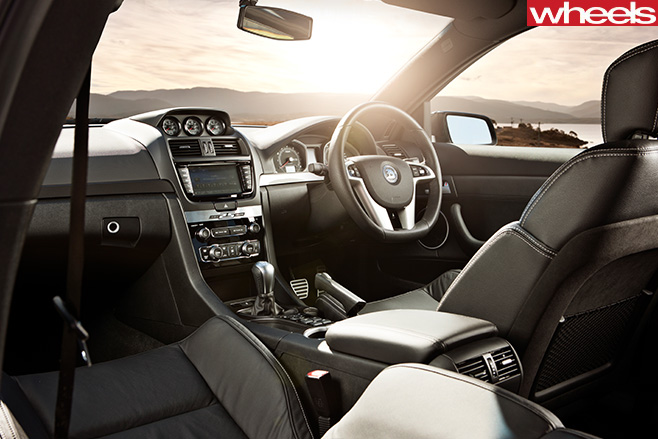
Don’t get me wrong, the R-Spec is a devastatingly fast car and can cover ground at lock-me-up speeds. But it lacks any sort of precision or finesse and feels old-school and aftermarket. Of course, none of this will matter to those who will insist the GT is the best car, or those who’ll lock theirs away hoping for a big payday in a decade’s time. And that’s fine. But the brash FPV makes me wonder whether either the Aussie car enthusiast or Aussie hotshop has moved on since the days of flares, panel vans and the Hardie Ferodo 500.
The Clubsport, the least powerful and slowest car here in a straight line, remains the most engaging on a twisty road – and I’d wager would not give away much, if anything, to the R-Spec on a racetrack.
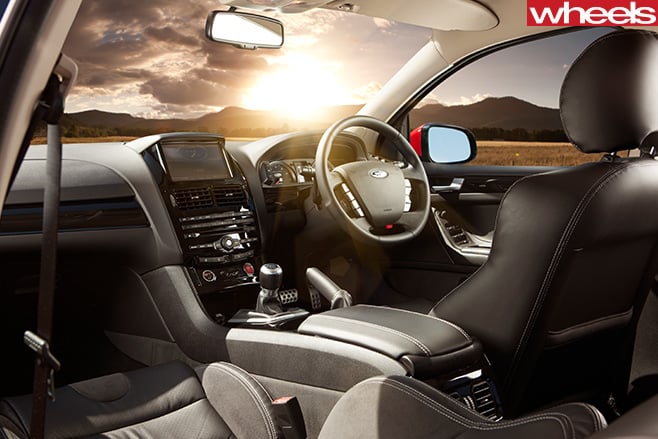
There’s proper feedback from the HSV’s slightly too-large steering wheel and you can lean on either end with confidence. And the linear power delivery of the 6.2-litre V8 allows you to measure out exactly one Newton metre less than what the rear 275/30 R20 Bridgestones can handle.
The R8’s V8 crackles and booms on the overrun and at night you can see the flash as the occasional flame pops from the exhausts. It sounds 50kW stronger than its 325kW output and the crisp throttle response cannot be matched by the Chrysler and FPV. In turn, the HSV can’t match the SRT8’s bigger-capacity punch through the mid-range, nor can it keep up with the seismic shove of the FPV. The six-speed manual shifts faster than the manual in the R-Spec and with significantly less effort.
So the HSV wins, by being fast enough, and because it’s got a proper, playful chassis; a virtue that the improved R-Spec still lacks. If the salivating XR6 Turbo owner reads this result, I suspect I might get spat on again. This time he’ll mean it.
Engine rooms
Two big-capacity atmo V8s and one smaller blown engine, but three distinct characters. The 6.2-litre pushrod HSV revs hard; the supercharged 5.0-litre FPV V8 has a linear mid-range; the 6.4-litre Hemi SRT8 feels reluctant through the middle revs. Chrysler claims the Hemi is 6424cc, but if you work out swept capacity from the supplied 103.9mm bore and 94.5mm stroke, you get 6410cc. Curious.

HSV CLUBSPORT R8
Price as tested: $71,990
Engine: V8 (90°), ohv, 16v
Capacity: 6.162 litres
Transmission: 6-speed manual
Power: 325kW @ 6000rpm
Torque: 550Nm @ 4600rpm
Power to weight: 179kW/tonne
O-1OOkm/h: 5.3sec
Fuel consumption: 13.5L/100km (ADR81/02)
NCAP rating: 5 stars (ANCAP)
Plus: Fluid steering; crisp throttle response; balanced handling
Minus: Interior feels very dated; not super fast; taut ride
Verdict: 8.0/10

FPV GT R-SPEC
Price as tested: $76,990
Engine: V8 (90°), dohc, 32v, supercharged
Capacity: 4.951 litres
Transmission: 6-speed manual
Power: autokW @ 5750rpm
Torque: 575Nm @ 2200-5500rpm
Power to weight: 181kW/tonne
O-1OOkm/h: 4.6sec
Fuel consumption: 13.6L/100km (ADR81/02)
NCAP rating: 5 stars (ANCAP)
Plus: Fastest-accelerating Aussie car ever; sweet supercharger whine
Minus: Updated chassis still lacks finesse; firm ride; interior quality
Verdict: 7.0/10

CHRYSLER 300 SRT8
Price as tested: $66,000
Engine: V8 (90°), ohv, 16v
Capacity: 6.410 litres
Transmission: 5-speed automatic
Power: 347kW @ 6100rpm
Torque: 631Nm @ 4150rpm
Power to weight: 183kW/tonne
O-1OOkm/h: 4.8sec
Fuel consumption: 13.0L/100km (ADR81/02)
NCAP rating: 5 stars (NTSB)
Plus: Interior design and quality; refinement; surprising pace
Minus: All controls lack feedback; interior and boot not hugely spacious
Verdict: 7.0/10

